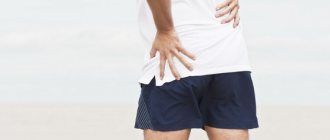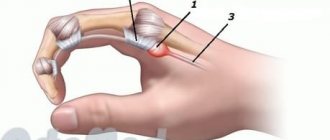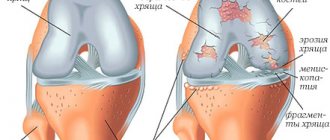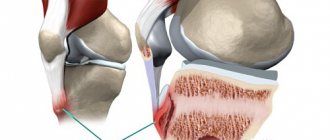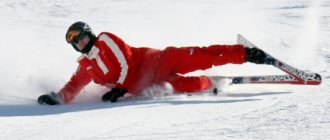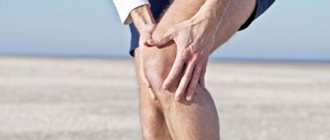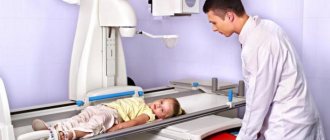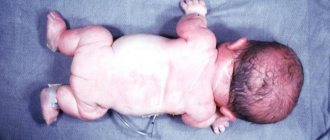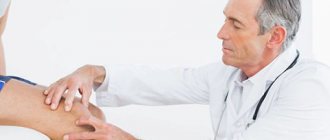Many experts around the world have long recognized health-improving walking as a universal type of exercise for our body.
This sport can be practiced by people of any age, even children. Depending on physiological indicators, there are certain conditions for each group. Dr. Shishonin talks about how to walk correctly so as not to harm your joints. Interesting Facts.
Scientists have proven that regular walking reduces the risk of breast cancer by 30%, reduces the intensity and frequency of hot flashes during menopause, and relieves menstrual pain. It has been established that the average inhabitant of our planet walks about 402,000 km throughout his life.
Why walking?
Each person takes several thousand steps every day, even if he is just moving around the house or walking short distances. Upright walking is natural for us; it is a physiologically familiar type of activity, during which different muscle groups are involved. We don’t think about how to walk, however, despite this, walking requires a lot of effort and energy expenditure from the body.
While walking:
- metabolism is activated in all systems and organs, including joints;
- muscles and ligaments are strengthened;
- movable joints are trained, and this is a powerful prevention of congestion;
- joy hormones are produced - people who walk a lot are less likely to suffer from depression.
Walking lifts your spirits
Three misconceptions about arthrosis - how to recognize the disease in time?
There are three misconceptions about arthrosis, due to which a person experiencing joint pain does not consult a doctor in a timely manner. Therefore, these myths need to be dispelled.
No. 1: joint disease will manifest itself in every person sooner or later
And this statement is partly true, because a large number of people, as they age, face arthrosis. As a person gets older, his body gradually loses the ability to retain water, and up to eighty percent of it is contained in the interarticular cartilage. Due to the fact that there is less water in them, joints lose their former elasticity and firmness, and this, in turn, affects their shock-absorbing functions and leads to injury. The work of chondrocytes, which restore cartilage, is also disrupted. As a result of all the changes, the cartilage becomes thinner and can easily collapse.
Despite the fact that everyone will still have to deal with arthrosis, it is possible to prevent the disease so that the symptoms of the disease appear as late as possible and are less pronounced.
What to do:
- The disease should not be neglected: when the first symptoms appear, you should consult a doctor in order to receive timely treatment.
- It is necessary to monitor your weight: extra pounds put a lot of stress on the body, including on the joints.
- Physical activity must be correct.
No. 2: the main sign of arthrosis is severe joint pain
People suffering from arthrosis often experience pain in the area where the disease occurs. The joint begins to hurt when a person moves, the pain may intensify in the evening, but as soon as you rest and relax a little, it subsides. Another sign of this disease is the so-called morning stiffness, when it is difficult to bend or straighten the joint. This condition can also occur during the day if you remain in a stationary position for some time. If we talk about the disease affecting the hands, sometimes they become deformed.
The problem is that when the disease just begins to develop, there are no pronounced symptoms, the person does not feel pain, stiffness, etc., there are only slight discomforts that usually no one pays attention to, chalking it up to a hard day at work.
And everyone's pain threshold is different. A person may not experience pain or problems with the joints, but the doctor, having sent him for an x-ray, will see extensive degenerative changes in the image.
You should not wait until the disease reaches its final stage and severe pain occurs; you should consult a doctor immediately if discomfort appears in the limbs, especially when you are overweight, have had injuries, or the person’s occupation involves heavy loads.
After the age of 50, the number of preventive examinations with an orthopedic surgeon should increase to two per year. The disease can cause significant harm to the body, especially in the final stages, so treatment of arthrosis
It is better to start at the first sign of its appearance.
No. 3: with this joint disease, cartilage is destroyed very quickly
“A person with such a disease will in any case have to undergo surgery to replace the destroyed joint; if this is not done, he may become disabled.”
This statement is not true. The joint really is destroyed, and this is an irreversible process. But, if you promptly contact a specialist who will diagnose and prescribe the correct treatment, the degenerative process can be stopped and the disease will not progress. Thanks to modern methods of therapy, the course of arthrosis can be controlled, significantly alleviating the patient’s condition.
The use of chondroprotectors plays a major role in the fight against joint disease. These drugs contain two substances that retain water in cartilage - glucosamine and chondroitin sulfate. The cartilage retains the required amount of moisture for normal functioning, metabolism is restored, and, as a result, the destruction of the joint stops. In addition, chondroprotectors relieve pain, but not immediately, but gradually. The effect can be felt some time after the start of treatment, which sometimes lasts up to six months. It is important to start therapy as early as possible, then its effectiveness will be much higher.
The following can be used as preventive measures to combat the disease:
- exercise therapy;
- physiotherapy;
- massage.
Your doctor will help you make the right treatment plan.
Who is at risk
If you pay close attention to your health and get examined on time, you can delay the development of joint diseases for many years, and this applies to everyone. But there are categories of people who are more susceptible to arthrosis than others:
- Female representatives. According to research, arthrosis is more common on women's hands than on men's. In the later stages of the disease, unsightly small bumps appear on the hands near the joints. The disease is inherited: if a mother or grandmother had similar formations on her hands, then her daughter/granddaughter may also develop them.
- Very flexible people. Those who have increased flexibility most likely have connective tissue dysplasia syndrome. This condition often causes microtraumas to appear on the cartilage. As a result of this, degenerative changes begin to occur faster both in the cartilage itself and in the joint, accelerating its destruction.
- Those people whose work involves lifting weights, physical labor, and athletes. There is a high risk of injury, the human body experiences greater stress, and cartilage wears out faster.
Author: K.M.N., Academician of the Russian Academy of Medical Sciences M.A. Bobyr
How to walk correctly so as not to cause harm
If you do not experience pain or discomfort, feel free to travel any distance. This kind of fatigue will be beneficial. If you have arthrosis of the ankle, knee or hip joint, be careful not to harm yourself with improper physical activity:
- wear comfortable shoes, without high heels, so that the load on the lower limbs is distributed evenly;
- If you have arthrosis, avoid climbing stairs - walk on level ground;
- do not walk if you are in pain - give your joints rest.
Walking on your Knees How to Walk Correctly
Walking on your knees - benefits and harms. You will learn how to walk correctly to cure arthritis, arthrosis and restore the knee joint.
Walking on your knees, according to modern experts, is a simple and effective way to combat diseases of the knee joints, disorders of the musculoskeletal system, and disorders of the circulatory system.
This exercise has many beneficial properties for women and men. We will discuss only the most important of them. So, what are the benefits and benefits of walking on your knees?
It turns out that knees hurt very often due to atrophy of the muscles of the back, legs, spine, in other words, pain occurs in people leading a sedentary lifestyle! The knee joint is in dire need of development. Moreover, the cause of 90% of knee pain is not the knee itself, but problems with the hip joint or lumbar spine.
Taoist therapeutic knee walking uses almost our entire musculoskeletal system, strengthening muscles and ligaments and providing a healing and strengthening effect.
The main load during the exercise falls on the muscles of the thigh and buttocks, as well as on the hip joints. The muscle tissue of the lower back is well used. The degree of loading of individual muscle groups depends on the tactics of performing the exercise.
Regular walking on your knees with arthrosis of the knee joint helps relieve pain, strengthens the joint, improves blood supply and increases the flow of synovial fluid into the joint cavity, which prevents it from drying out.
Start walking on your knees while destructive processes have not yet begun in them or are in the early stages - this will serve as an excellent prevention of arthritis, arthrosis and related pathologies.
Exercise technique
- Get on your knees and stand for 30 seconds.
- Alternately shift your body weight from one leg to the other, lifting one knee off the floor.
- Start movements on your knees, simulating walking, supported by your fists. Raise your knees one at a time.
- Continue walking on your knees without relying on your fists.
If it is impossible to perform these actions, simply transfer the weight of your body from one leg to another.
Cautions
Excessive or monotonous load on unprepared, weakened muscles can cause harm when walking. So start with the minimum, even just kneeling for a few minutes.
If you feel pain in your knee joint with such a load, and this is quite possible at first, try walking on your knees on the bed. When the leg muscles are strong enough, the pain will go away!
Contraindications
- If unknown formations (bumps, growths, etc.) are found in the knee area.
- For any diseases accompanied by an increase in body temperature.
- Receiving any injuries to the knee joint, as well as in the presence of abrasions and wounds.
- For osteochondrosis, arthritis and arthrosis in the acute stage.
In order not to harm your health, you need to perform the exercise correctly.
Recommendations for performing the exercise
- If swelling is noticeable in the area of the knee joints, then before starting the exercises you should massage your ankles and kneecap.
- If it hurts to go down and kneel, let them get used to it first. Kneel on the pillows and just stand there for as long as you can stand it. The next step is to remove the pillows and start moving. In the first days, take at least two or three steps, and add the same amount every day. The “golden ratio,” according to Taoist doctors, is 400 steps a day.
- This exercise produces a healing effect on the body only with daily exercise! You need to devote 15–20 minutes to this workout every day, only in this way the result will be noticeable.
- While walking, there should be a blanket, mat or soft carpet under your feet. You can wear gloves on your hands and knee pads on your feet. For example, Dr. Bubnovsky recommends wrapping bags filled with crushed ice around your knees. But over time, you won't need them anymore.
- About the direction of movement. You need to start by walking forward, then back - and again in turn. The torso is in a strictly vertical position, without stooping or bending left or right. If you walk on all fours, take steps as wide as possible. For variety, you can walk in a circle, square, figure eight, sideways with side steps, write letters with your feet, go up and down stairs, and use the Nordic walking technique with ski poles.
- After completing the exercises, lie on your back, lift straight but relaxed arms and legs and shake them, relieving tension from worked muscles and joints.
What are the benefits of Nordic walking?
You have all probably seen people who walk by pushing off the ground with sticks. Nordic walking is a healthy and safe sport that is often recommended for people with damaged joints.
During normal walking, a person uses about 60% of the muscles, and with Scandinavian walking - due to the work of the upper limbs - up to 90%! The load on the arms, neck and shoulders increases, and most importantly, it is distributed evenly, and does not fall only on the lower segment of the body. That is why Nordic walking is safer for cartilage damage in the joints of the lower extremities.
After several workouts you will feel the following effect:
- the joint will work better because the tone of the muscle fibers in the periarticular tissues will increase;
- the range of motion of the damaged joint will increase;
- the feeling of stiffness will become less pronounced.
Nordic walking was invented by Finnish skiers as a summer activity.
Are there any contraindications for Nordic walking? The answers are in the video below:
Recommendations from a highly qualified specialist
According to Dr. Shishonin, healthy walking can replace many medications, but not a single drug can replace movement. The healing effect is observed only with 40-45 minutes of continuous walking. It is due to the fact that bioactive, restorative substances (serotonin, endorphins, somatotropic hormone) enter the blood. Considering all of the above, to achieve the maximum therapeutic effect, a person should walk for at least 50-55 minutes in a row.
Important.
In the process of health-improving walking, a person must walk in a monotonous mode, that is, at the same speed, in the same rhythm over uneven terrain. It is desirable that it be without tilts, descents and ascents
In monotonous mode, an ordinary person can walk 3-4 km. To obtain a healing effect, you need to practice walking every day, but in our climatic conditions this is quite difficult to do. Therefore, Dr. Shishonin recommends that all his patients who do not have problems with the musculoskeletal system purchase a treadmill. If you are in good physical shape, you can walk 6 to 7 km/h on a treadmill.
When walking, you need to choose the optimal mode that is most comfortable for you. In this case, the risk of joint damage is reduced. Our body easily adapts to a monotonous step and most effectively dampens all biomechanical fluctuations that arise at this time. If you feel pain in the joints or shortness of breath, you need to reduce your walking speed to 3-3.5 km/h. The appearance of shortness of breath when walking indicates the presence of functional heart failure. With regular training, it will disappear over time.
During recreational walking A.Yu. Shishonin does not recommend using Scandinavian poles, since this additionally loads the shoulder girdle and disrupts the biomechanics of the spine. If balance is disturbed, this tool can be used; it acts as an additional point of support.
Important.
Healthy walking is contraindicated in case of coxarthrosis of the hip joint, II degree arthrosis of the knee joint.
In all other cases, healthy walking is very beneficial for health. More information can be found in the “ Club of Former Hypertensive Patients
”. Registration of participants is completely free.
Or maybe it's better to run?
In no case! If everything is that bad, then it’s better to swim. If you have arthrosis of the hip, knee or ankle, sudden movements are contraindicated. After all, when running, the likelihood of falling and injury increases, and this is very dangerous for the damaged joint. Cartilage is not able to fully absorb dynamic load, so when running, cartilage tissue is injured again and again.
Nordic or normal walking involves smooth movements that do not pose a risk to the joints. Leaning on ski poles, a person also keeps his back straight and does not load the spine. Support points evenly distribute the load, which reduces the likelihood of overstrain and injury to the joints of the lower extremities. At the same time, all muscle groups and the cardiovascular system are trained.
You can't run with arthrosis
Gonarthrosis (arthrosis of the knee joint)
Gonarthrosis ( arthrosis of the knee joint ) in the group of arthrosis lesions of the joints leads in the frequency of occurrence of the disease. Patients with gonarthrosis ( arthrosis of the knee joint ) constantly prevail among patients visiting clinics, but, unfortunately, there are few of them among those treated in our hospitals. Treatment in an inpatient setting could have a much greater effect than outpatient therapy “on the job.” Known to doctors for more than 100 years, this disease in everyday life is called “salt deposition.”
In fact, with arthrosis, calcifications (deposits of calcium salts) can occur in the soft tissues of the knee - ligaments, tendon attachment sites, etc., but these calcifications are limited in nature and, as a rule, do not have independent clinical significance. In gonarthrosis (arthrosis of the knee joint), the degenerative-dystrophic process in the hyaline cartilage covering the condyles of the femur and tibia comes to the fore. And the pathological process begins with impaired blood circulation in small bone vessels, followed by changes in the cartilaginous cover of the joint.
Initial changes develop at the molecular level in the cartilage tissue, and their result gradually becomes noticeable changes in the hyaline cartilage: it becomes cloudy in places, becomes thinner, delaminates and cracks in different directions. Finally, the pathological process can end with the complete disappearance of cartilage over a greater or lesser extent, exposing the underlying bone. The latter reacts to the death of the cartilaginous covering by compaction (sclerosis) of the subchondral zone, excessive growth of bone along the periphery (the so-called “spikes”), deformation and axial curvature of the leg; This is where the full name of the disease comes from: arthrosis deformans. Conventionally, arthrosis of the knee joint can be divided into primary and secondary.
Primary gonarthrosis develops during normal life. Elderly people suffer, women more often than men. People with increased body weight and obesity are clearly more likely to develop gonarthrosis Secondary gonarthrosis is based on injury to the knee joint (intra-articular fracture of the femur and tibia, ligament rupture, damage to the meniscus, hemarthorosis) or a previous disease ( arthritis of various etiologies, chondromatosis of the joints, “joint mouse”, etc.). Timely adequate treatment of the listed processes can prevent the occurrence and development of gonarthrosis. The complaints of a patient with this disease initially boil down to a feeling of a certain stiffness in the joint, “tightening” under the knee, pain in it after a long walk.
Most patients also complain of difficulty walking in the morning, after sleep, or after more or less prolonged sitting. “When you separate, it becomes easier,” they note. Over time, the disease progresses, the pain becomes persistent, constant, and intense; the pain is most often localized on the inside of the knee. Many patients feel a crunching sensation when moving the knee joint. Limitation of flexion and (or) extension gradually develops. Lameness progresses over time. In severe cases, patients cannot move at all without assistance or without support from the back of a chair, crutches, etc. In a supine position, the pain subsides, but sometimes patients suffer from pain at night.
Examination of the knee joint in the initial stage of the disease does not reveal external changes. In the future, one can note deformation of the knee, rough contours of the bones forming the joint, contracuture (incomplete extension or flexion) and curvature of the tibia axis, usually inward. If you place your palm on the front surface of the knee, then during flexion-extension movements the examiner will feel a crunch in the knee joint of varying intensity and duration. The same crunching sensation can be obtained by moving the patella outward and inward in the transverse direction (positive patello-condylar symptom).
When palpating the joint, a painful area is revealed, most often on the inside of the joint, at the level of the femoral condyles, tibia and joint space. Often, effusion accumulates in the cavity of the knee joint, i.e. synovitis occurs. This condition is determined by the smoothness of the contours of the knee joint due to bulging, protrusion of tissues above and to the side of the patella and a feeling of fluctuation when palpating the bulge with both hands.
Synovitis of the knee joint indicates a complication of arthrosis by an aseptic inflammatory process, and then we have reason to designate this condition of the knee joint as “arthrosis-arthritis.” The temperature with arthrosis-arthritis, as a rule, does not increase and blood tests do not show deviations from the norm.
Subjectively, patients define additional synovitis as a new feeling of heaviness in the joint, interfering with knee flexion. As can be seen from the above data, the clinical diagnosis of gonarthrosis (arthrosis of the knee joint) is simple and quite accessible. However, in any case, an x-ray examination is necessary. It confirms and clarifies the diagnosis, establishes the degree of arthrosis changes, allows you to monitor the dynamics of the process over time and, finally, radiography is necessary to exclude a tumor or some other process in the bones that form the joint. In the initial stage of gonarthrosis, radiological changes may be either absent or very insignificant. At a later date, a narrowing of the joint space, sclerosis of the subchondral zone, sharpening of the edges of the condyles of the femur and tibia, and sometimes salt deposition in the surrounding soft tissues are revealed. X-ray examination of elderly and old people in many of them reveals pronounced changes described above.
But not all those examined have symptoms of gonarthrosis. From this we can conclude that arthrosis and age-related changes in joints cannot be equated. Only a combination of clinical and radiological signs should define the concept of gonarthrosis . Treatment of gonarthrosis (arthrosis of the knee joint) is a difficult task. It can be conservative and operative. The basis of conservative treatment is rest and unloading of the affected knee joint. If this condition is not met, any conservative treatment will be ineffective. In stationary conditions, cuff traction of the shin is used to fully unload the knee joint.
In the complex treatment of gonarthrosis, therapeutic exercises play a positive role. It is performed on patients to prevent contractures, improve blood circulation in the limbs, and increase muscle tone. It is very important to have your first gymnastics lesson in the morning before you get on your feet and start walking. A set of exercises should be obtained in a physical therapy room and performed 3-4 times a day; This is especially important when moving from a horizontal to a vertical position. After work, it is recommended to rest lying down for 30-45 minutes. Semi-alcohol warming compresses and warm (36-36 degrees) baths (possibly with pine needles) before bed complete home treatment. Carrying it out entirely depends on the patient, and he needs to be convinced of the importance of punctually following the recommendations.
Treatment of gonarthrosis is complemented by various types of physiotherapy (diadynamic currents, phonophoresis with hydrocortisone, electrophoresis with novocaine, ultraviolet irradiation, UHF), laser and magnetic therapy, leg massage. Sanatorium treatment is useful, which can be carried out at any resort if the list of indications for treatment contains a reference to “diseases of the movement organs.”
The craze for intra-articular administration of hydrocortisone and other steroid hormones has given way to a balanced approach to treatment. The method of intra-articular oxygen therapy competes with hormonal therapy, and in some cases complements it. It consists of introducing gaseous medical oxygen into the cavity of the knee joint . Proper treatment of intra-articular fractures, removal of damaged menisci, restoration of torn ligaments, removal of the “articular mouse” are at the same time the prevention of gonarthrosis. However, even with developing arthrosis due to these processes, surgical treatment can stop the development of arthrosis and significantly alleviate the patient’s condition.
Drug treatment of arthrosis of the knee joint, despite its widespread use, plays a very modest role. The solution to the problem of gonarthrosis to a certain extent depends on its prevention. A reasonable combination of work and rest, physical education, which allows you to maintain the tone of the vascular and muscular systems for many years, preventing weight gain, timely seeking qualified help - these are the main factors in the prevention of deforming gonarthrosis.
Specific types of walking for arthrosis
The complex of exercise therapy for arthrosis of the knee sometimes includes an interesting exercise - walking on your knees. Leaning on the knee joints affected by arthrosis, the person slowly moves forward and backward on the carpet. The torso remains in an upright position, and the back should be flat.
The exercise can be done with arthrosis only in consultation with a doctor. If everything is done correctly, you will feel that the pain has decreased. The ligaments around the joint are strengthened more intensively than during normal walking, since they are directly impacted. Since other muscle groups must be used to perform movements, the entire musculoskeletal system is strengthened.
Not everyone can “walk” on their knees
If you love sports but can't afford to play basketball or volleyball, rock climbing or tennis, switch to walking. Nordic walking in many countries is considered a very exciting activity and arouses a lot of interest among representatives of different age categories. Walk a lot and have fun - your joints will thank you!
The benefits of healthy walking
Healthy walking is recommended for absolutely all categories of people, regardless of their gender, age, physiological characteristics and health status. In the process of walking, energy metabolism is intensified, the body's immune resistance is strengthened, and the work of muscles, internal organs, and the cardiovascular system is activated. In addition, healthy walking helps to cope with extra pounds.
With daily walking you can achieve the following effects:
- improve overall well-being;
- strengthen the heart muscle;
- increase endurance;
- strengthen the muscle frame;
- reduce intraocular pressure;
- prevent the development of thromboembolism, heart attack and stroke;
- reduce the risk of developing cancer;
- improve mood;
- optimize brain function;
- reduce blood cholesterol levels;
- normalize the functioning of the digestive tract;
- reduce the risk of developing type II diabetes mellitus;
- normalize sleep;
- relieve feelings of helplessness;
- increase life expectancy;
- activate the immune system;
- increase lung capacity and depth of breathing;
- eliminate stressful phenomena;
- strengthen the musculoskeletal system.
